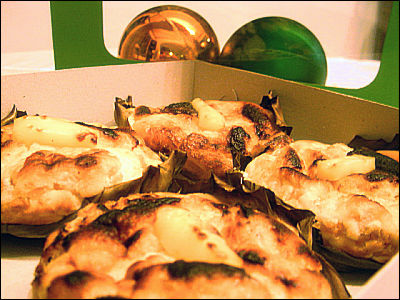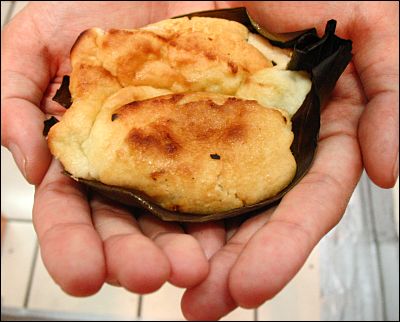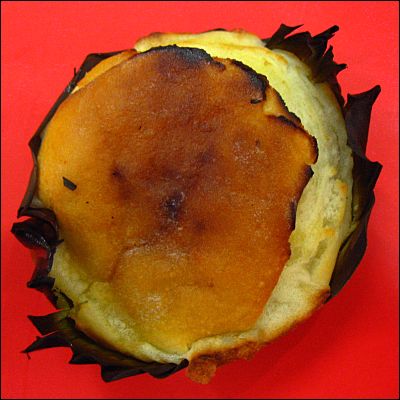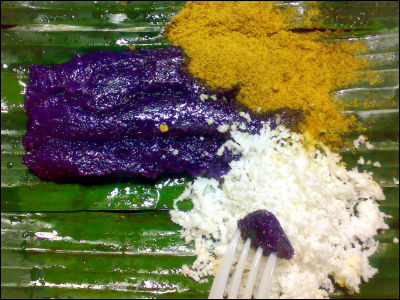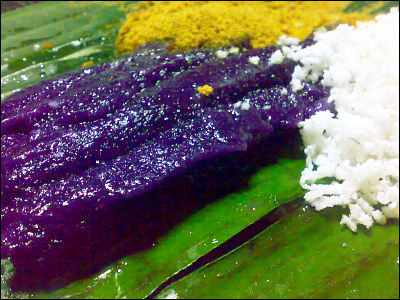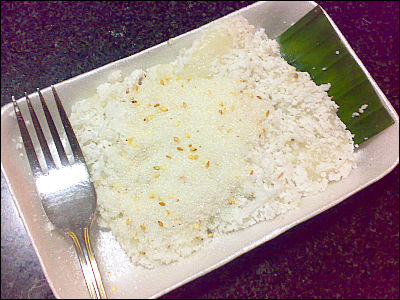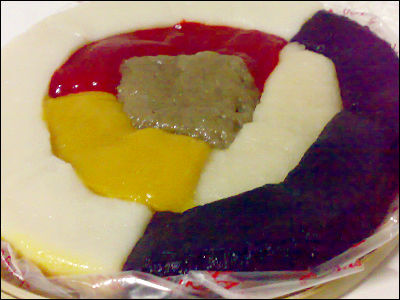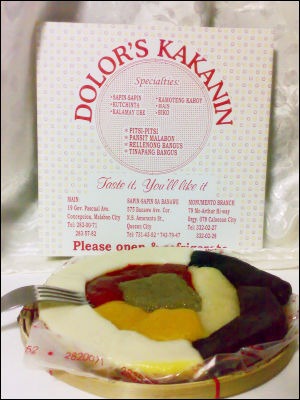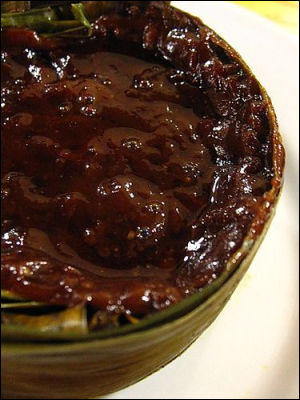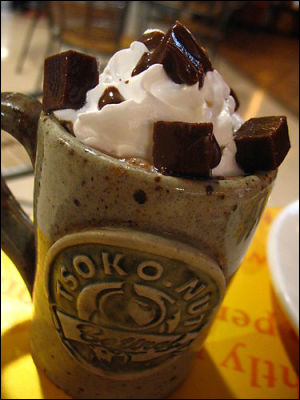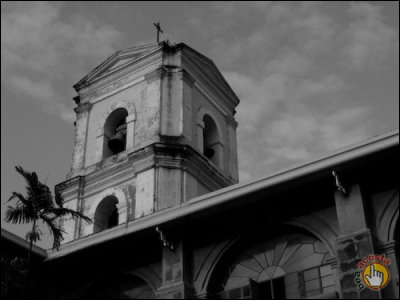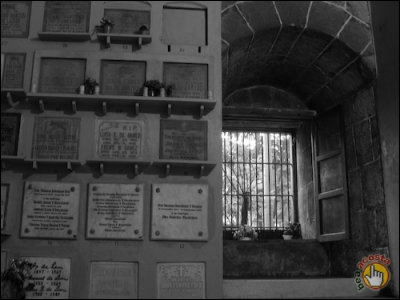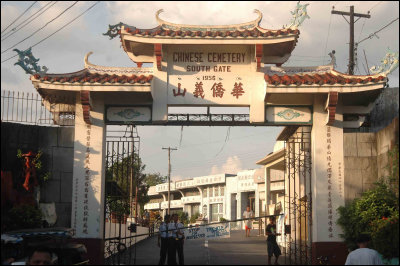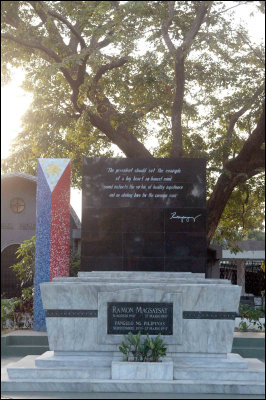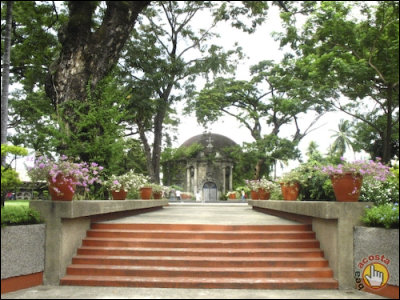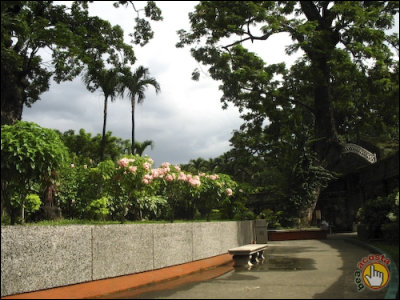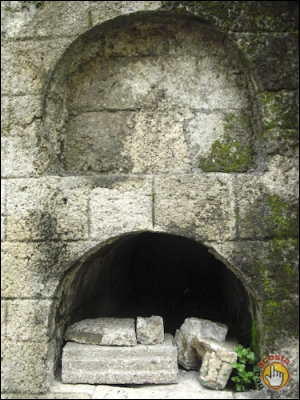A Long Week’s Journey Into Paradise In The Philippines
The
Philippines, the world’s second-largest archipelago next to Indonesia,
is speckled with hundreds of islands boasting pristine beaches,
cross-cultured cuisine, and friendly people wearing content smiles. The
wide variety of islands encompass an illustrious array of different
languages and topographies that make the Philippines a destination that
travelers find themselves revisiting over and over again.
Beaches with driftwood that ornament the sugar-like sand lightly sparkle from the sun. The water is a sapphire blue that melts into the afternoon sky making the horizon vanish. There is only one set of footprints in the sand that lead directly to a village just beyond the barrier-bitten black volcanic rocks. No, this is not bustling Boracay, the destination most well renowned in the Philippines, but Negros, an island located in the central Visayas.
A ferry from Cebu city, the major travel hub in the Visayas, can connect you with the port city of Dumaguete, the self-proclaimed “most friendly city in The Philippines.” Dumaguete is home to the first Protestant university in the country, Silliman University, and incorporates the exemplary fiesta vibe that seems to resonate throughout the rest of the Visayas. The pace in Dumaguete is leisurely, even for a city in the Philippines, and a great port of entry to the rest of Negros Oriental.
A five-hour bus ride northwest from Dumaguete along coastline and through rice paddies will bring you to Sipalay, the home of secluded Sugar Beach. However, your journey has only made it to the start of the last leg at this point. From Sipalay you must rent a “trike” — a motorcycle with a side car — to ride over a rickety wooden bridge. From there, small motor boats must be hired to take you and your belongings around the peninsula of Sugar Beach. If you are lucky enough to catch the night sky, the boat ride will be illuminated by globs of fireflies clenched to mangroves and the occasional shooting star plummeting through the stainless sky. The hum of crackled karaoke and chatter breaks through the silent night as the boat passes a small village. The beach looks like a black void completely barren of lights. None of the hotels on Sugar Beach break the forest line.
Sugar Beach is a castaway’s haven, offering a small selection of palm-roofed bungalows, driftwood villas, and sand-carpeted bars a stone’s throw from the Sulu Sea. Beach-washed European proprietors claim the four main accommodations on Sugar Beach. Jogi, a willing castaway from Germany, remembers the days when travelers would wash up on the shores and set up tents under the thatched roof that has now become his restaurant and bar. “I started the construction on Sulu Sunset in January of 2000,” Jogi remembers. “When the restaurant was finished, I, my family, and the staff slept in tents.”
All of his employees are locals from the neighboring villages around Sugar Beach. “That was the time we cooked and ate where the bar is now. Of course, we had to run generators at the time,” Jogi continues. “Germans need cold beer.”
The
bungalows, chairs, and tables are all built from the surrounding
coconut trees and bamboo stalks. If it rains, you’ll find that
coconut-based items from the restaurant will be limited because the
trees will be too wet to climb.
By the end of 2000, Jogi had built four bungalows with the help of his family, staff, and fellow German cohort, Oliver, a backpacker who discovered Jogi through a pension house in Sipalay. He ended up staying two weeks to help Jogi with odds and ends. “Oliver continued his trip to Palawan and told every backpacker in the whole of Palawan Island about my place.” After the word got out, Jogi’s four bungalows periodically began filling up. But, if travelers can’t find a place to sleep during the high seasons of January and February, they’re always welcome to pitch a tent.
Beached fishing boats sway in the sand as the gentle tide glides them with the pace of the evening current. The sand turns a shade of red as villager’s gaze on to the sunset. Day trips picnicking on the beach are very much a part of Philippine culture. The English literacy rate in the country is over 90%, making it very easy to communicate here compared to many other parts of Asia.
Fifteen minutes by foot from the northern point of Sugar Beach lays a beach facing east towards the sunset, barricaded by jagged volcanic rock on both sides. As I sit, a shadowy figure emerges from the damp jungle behind me, spilling onto the sunlit sand. Doubts grow in my mind as to whether I have arrived on his private property or insulted him by taking pictures of what appears to be a village beyond the brush.
“Hello friend,” the young man says, greeting me with a smile wide enough to knock the blue baseball cap off his head. “Do you need a room?” He offers. “You can stay here in my village . . . we can also cook some fish for you.” Read the whole story here http://www.theexpeditioner.com/2009/10/04/philippines/
Natural disaster preparedness for the overseas adventure traveler
An earthquake in Indonesia. A tsunami in Samoa and Tonga. Deadly
storms in the Philippines, Vietnam, and Cambodia. The latest string of
natural disasters in Southeast Asia and the Pacific Islands might have
you wondering what you would do if you were traveling overseas and
Mother Nature reared her ugly side. While not as devastating or widely
televised as the 2004 Indian Ocean tsunami, these recent and powerful
natural disasters have taken numerous lives, injured many, destroyed
communities, and serve as a bold reminder that these things do happen.
And it could just be while you’re on your next exotic adventure across
the globe. What would you do?
The situation turns dramatically different when we suddenly find ourselves in a remote village on the island of Sumatra, with no cell phone access, no TV or radio updates, and - perhaps most daunting - no ability to speak the local language in order to communicate with anyone. The scenario sounds downright scary, not to mention it could prove to be life-threatening.
When traveling abroad, we’re often accompanied by a sense of invincibility. Adventure travel - particularly in the exotic third world - has a way of doing that to us. Making us feel indestructible. Daring us to go beyond our comfort zones. Urging us to try crazy new things. While those are the hallmarks of this type of exploration, they might not serve us well when faced with a natural disaster. On the other hand, adrenaline could be your best friend in a drastic situation.
Here are a few things you can do to protect yourself before and during your overseas travels:
Be informed
The International Federation of Red Cross and Red Crescent Societies has a wealth of information, including detailed reports and statistics for the latest natural disasters affecting the Asia Pacific area.
Read and watch the international news for the areas in which you’re traveling. You can find BBC World and CNN International broadcasts in English in most Western-catering hotels and even smaller guesthouses. You can even set up a CNN profile and be alerted via email or your mobile device when breaking news occurs.
Visit an online community forum, where folks in-country regularly report the latest real-time accounts of what’s happening around them, first-hand and uncensored.
Register with the U.S. embassies and/or consulates
In the event of a natural disaster, terrorist attack, or even a health emergency, you’ll have an easier time getting assistance abroad. This is particularly important for those traveling longer than one month in any one country, and/or in areas where there are known problems, natural or political. The U.S. State Department website has detailed information on how to register.
Purchase a good travel insurance policy
I always recommend some level of travel insurance in my Tips for Extended World Travel seminars. What specific coverage you buy is up to you, but it’s a good idea to consider a plan that includes natural disaster coverage. Check the U.S. State Department’s comprehensive list of insurance providers, or consult my list at the bottom right of this article.
Leave contact details with a friend or family member
Even if you’re a last-minute traveler who shows up unannounced in a place, you can usually get yourself to a cheap Internet cafe - or use your laptop if you have one - to check in with folks back home. Drop them a quick note and let them know your whereabouts. Give them the name of your guesthouse, hostel, or hotel; provide a website for your accommodations if available. Bottom line: It’s a good idea to let someone close to you know your whereabouts at points along your journey.
For more info: The Centers for Disease Control and Prevention (CDC) devotes a section of their website to natural disasters and severe weather. While geared toward the U.S., these tips could prove helpful - although not always practical - anywhere in the world. Some international information is provided. Read the original posting here
http://www.examiner.com/x-19106-SF-Adventure-Travel-Examiner~y2009m9d30-Natural-disaster-preparedness-for-the-overseas-adventure-traveler
The Top Five Island Tourist Destinations in the Philippines
Boracay
Number
one on the list, of course, a world class resort, the most popular
island destination and the number one tourist spot in the Philippines –
Boracay. It is regarded as “the finest beach of all Asia”. Likewise,
popularly known as, “the number one tropical beach in the world”.
Everyone will surely enjoy swimming and sunbathing on its 4 kilometer
“white sand beach”. You will definitely like this island paradise. It
is situated in Panay Island, Philippines, about 300 km south of Manila.
Palawan
Next
on the list is Palawan known as “the last Philippine frontier “. It is
blessed with beautiful tourist attractions like Club Paradise Resort,
El Nido Resort, and many others. The famous underground river is also
here, and the Tubbataha Reef Marine Park which is the best place for
snorkeling in Asia is also located on this island.
Dakak
Third
on the list is another world class beach resort, Dakak. It is famous
not only for its “powdery white sand” but also famous for its coral
reefs and diving that is why it was named the “Diving Mecca in
Mindanao”.
Siargao
In the fourth spot, we have
Siargao, the haven of surfers from all over the world. Popularly known
as, “the surfing capital of the Philippines”. International Surfing
Cup is held here annually.
Batanes
And the
last, but certainly not the least, we have Batanes, the northernmost
province of the Philippines. It is the smallest province in terms of
land area and population. You will surely love this place. It is the
best place for nature lover and people who love tranquility and
serenity. This is where the Pacific Ocean merges with the South China
Sea. Batanes is great for summer vacation, fishing, diving and hiking.
Read the complete orginal posting here and also the beautiful photos the writer has http://trifter.com/asia-pacific/philippines/the-top-five-island-tourist-destinations-in-the-philippines/
Philippine Wonders of Nature
The wonders of nature found in the Philippines. Some of the
featured places are included in the on-going search for the seven
wonders of the world
If you are a nature lover, you will like it here in the Philippines. It is here where some of the most beautiful wonders of nature are found. These world-renowned wonders of nature are sights to behold and to enjoy by citizens of the world. Listed here are some of the great wonders of nature found in the Philippines. I have chosen 10 places that in my opinion are the best places to see in the country.




This great wonder of nature is another sight to enjoy. It is located in Palawan, Puerto Princesa, about 50 kilometers north of the Capital City. It has about 8 kilometers of navigable Underground River considered to be the longest in the world and features a limestone karsts mountain landscape. The river winds through a cave before it flows directly to the sea. This underground river has several chambers and also contains major formations of stalactites and stalagmites. Like the Tubbataha Reef, this nature park is included in the Unesco Heritage List.


Mount Mayon is an active volcano and has erupted about 47 times in the last 400 years. The volcano is known the world over as the most perfect cone shape volcano.


The most destructive eruption of Mount Mayon occurred in 1814 when lava flows emanating from the volcano buried the nearby town of Cagsawa, leaving only the bell tower of the church visible from the ground.. In this worst eruption, more than 2,000 people died.





from the blog http://www.bukisa.com/articles/29226_philippine-wonders-of-nature
If you are a nature lover, you will like it here in the Philippines. It is here where some of the most beautiful wonders of nature are found. These world-renowned wonders of nature are sights to behold and to enjoy by citizens of the world. Listed here are some of the great wonders of nature found in the Philippines. I have chosen 10 places that in my opinion are the best places to see in the country.
Banaue Rice Terraces
This beautiful place is located in the northern part of the country. This wonder of nature is known to Filipinos as the 8th wonder of the world. This rice terraces has been carved into the mountains by the indigenous people of Mountain Province and Ifugao more than 2000 years ago. The Banaue Rice Terraces is included in the Unesco World Heritage List in 1995.
Tubbataha Reef Marine Park
This Unesco World Heritage-listed marine park is located in the Municipality of Cagancillio, Province of Palawan. Tubbataha is made of about 10,000 coral reefs lying in the middle of Sulo Sea. Tubbataha is a nesting place for green sea turtles. It has almost 500 species of fish, about 45 species of birds, 9 species of dolphins and whales and it has about 400 species of corals.

Puerto Princesa Subterranean River National Park

This great wonder of nature is another sight to enjoy. It is located in Palawan, Puerto Princesa, about 50 kilometers north of the Capital City. It has about 8 kilometers of navigable Underground River considered to be the longest in the world and features a limestone karsts mountain landscape. The river winds through a cave before it flows directly to the sea. This underground river has several chambers and also contains major formations of stalactites and stalagmites. Like the Tubbataha Reef, this nature park is included in the Unesco Heritage List.
Chocolate Hills
Chocolate Hills is located in Bohol, Philippines. It is made up of around 268 small cone-shaped hills that are almost of the same size and spread over an area of about 50 square kilometers. These coned-shaped hills are covered with grass and turns brown like a dark colored chocolate during summertime

Mayon Volcano
Mount Mayon is located is located in the province of Albay and about 15 kilometers northwest of the capital city of Legaspi.Mount Mayon is an active volcano and has erupted about 47 times in the last 400 years. The volcano is known the world over as the most perfect cone shape volcano.


The most destructive eruption of Mount Mayon occurred in 1814 when lava flows emanating from the volcano buried the nearby town of Cagsawa, leaving only the bell tower of the church visible from the ground.. In this worst eruption, more than 2,000 people died.
Boracay Beach
Boracay Island is located in the province of Aklan with a land area of about 10 square kilometers. The island is famous for its powdery white sand and now considered as one of the best beaches in the world. From an unknown travel destination years ago, Boracay is now teeming with upscale tourists from all over the world.
Siargao Island
Siargao Island is located in the province of Surigao del Norte. It has a land area of over 400 square kilometers. Siargao is known the world over as one of the best Surfing destinations. It is home to Siargao Cup, a Philippine and International Surfing competition sponsored by the local government of Surigao.
Hundred Islands of Pangasinan
Hundred Islands is located in Pangasinan. These islands are scattered in deep blue waters of Ligayen Gulf. Some of the bigger islands have white sand beaches and dining facilities for visitors to enjoy.
Pagsanjan Falls
Pagsanjan Falls is located south of Metro Manila in the province of Laguna. The place is very popular among domestic and international travelers. Shooting the rapids is its major attraction. Boatmen will take you in their banca (wooden boat) to the river upstream, go swimming and shoot the rapids on your way downstream.
Taal Volcano
Taal Volcano is located in the island of Luzon in the province of Batangas, about 50 kilometers south of Manila. It is an active volcano with a large lake in its crater. The lake is popular fishing ground for residents living in the vicinity of the volcano.
from the blog http://www.bukisa.com/articles/29226_philippine-wonders-of-nature
The Best Beach In The Philippines
I will be a cliche and say that Boracay is still, by far the best beach in the Philippines. No other Philippine beach comes close to it. Palawan, also called the last frontier, may have its beautiful little beaches but when individually putting these beaches side by side with Boracay, Palawan’s beaches pale in comparison.
So why do I love Boracay so much? Let me count the ways.

Boracay has a 3 kilometer shoreline of fine dazzling white sand. Even if you walk barefoot on a scorching sunny day, the sand seems to absorb the sun’s heat and never gets hot as to require you to wear slippers.

Blessed with warm waters from the __ sea, you can dip in Boracay’s waters any time of the day and not shiver in the cold. And the color of the water, it makes you want to drown yourself underneath and never come back up. Even the seabed has fine sand which makes it all the more enjoyable.

With the advent of commercialization, some folks say that Boracay is no longer the paradise that it used to be. True there are now establishments along the beach but I do believe that it only opened up the island to all walks of life. Now it’s not just for people who prefer to rough it out with nature. The filthy rich can have the luxury that they are accustomed to while the not so rich still have their choices of very affordable accommodations.

The food on the island has also become very varied which can only mean that people have more places and restaurants to choose from. Those who complain that the place has become quite expensive don’t know where to look, or lack the stomach for adventure. You only have to dig deeper to see that not everything is priced for foreigners.

The nightlife is thumping as well. There are a lot more bars and establishments now so after a full day of swimming and frolicking under the sun, you can drown your sorrows in beer or dance the night away in the many bars and restaurants by the beach.

Boracay has also become more accessible. Before, people have to spend long hours at sea just to be able to save on fares, but now with plummeting plane fares, everyone can just hop on a plane and be on the island in just a couple of hours minus the financial distress. Having said that, what’s not to love about Boracay, the best beach in the Philippines. click this link to go to the original complete posting
http://agiledeals.com/2009/06/the-best-beach-in-the-philippines/
So why do I love Boracay so much? Let me count the ways.

Boracay has a 3 kilometer shoreline of fine dazzling white sand. Even if you walk barefoot on a scorching sunny day, the sand seems to absorb the sun’s heat and never gets hot as to require you to wear slippers.

Blessed with warm waters from the __ sea, you can dip in Boracay’s waters any time of the day and not shiver in the cold. And the color of the water, it makes you want to drown yourself underneath and never come back up. Even the seabed has fine sand which makes it all the more enjoyable.

With the advent of commercialization, some folks say that Boracay is no longer the paradise that it used to be. True there are now establishments along the beach but I do believe that it only opened up the island to all walks of life. Now it’s not just for people who prefer to rough it out with nature. The filthy rich can have the luxury that they are accustomed to while the not so rich still have their choices of very affordable accommodations.

The food on the island has also become very varied which can only mean that people have more places and restaurants to choose from. Those who complain that the place has become quite expensive don’t know where to look, or lack the stomach for adventure. You only have to dig deeper to see that not everything is priced for foreigners.

The nightlife is thumping as well. There are a lot more bars and establishments now so after a full day of swimming and frolicking under the sun, you can drown your sorrows in beer or dance the night away in the many bars and restaurants by the beach.

Boracay has also become more accessible. Before, people have to spend long hours at sea just to be able to save on fares, but now with plummeting plane fares, everyone can just hop on a plane and be on the island in just a couple of hours minus the financial distress. Having said that, what’s not to love about Boracay, the best beach in the Philippines. click this link to go to the original complete posting
http://agiledeals.com/2009/06/the-best-beach-in-the-philippines/
Why Travel To The Philippines
Traveling to the Philippines can be one of the most rewarding adventures you can have in your life.
Reason #1 – The Weather
This goes without saying. The Philippines is a tropical island which means that we have sunshine all year long. True there are the occasional typhoons here and there but these are usually concentrated in certain parts of the country. With all the information available on the weather, it should be relatively easy to target areas in the country where there’s no typhoon. If you’re cooped up in a European country where it’s always cold, the abundance of sun here will be a very welcome change.
This goes without saying. The Philippines is a tropical island which means that we have sunshine all year long. True there are the occasional typhoons here and there but these are usually concentrated in certain parts of the country. With all the information available on the weather, it should be relatively easy to target areas in the country where there’s no typhoon. If you’re cooped up in a European country where it’s always cold, the abundance of sun here will be a very welcome change.
Reason #2 – The People
I don’t think you’ll find any other country in Asia where people are more welcoming towards foreigners. We’ve had lots of experience with foreigners staying (some even overstayed) in the islands since the 1800’s. Seriously though, people here always have that ready smile and a pathological desire to please visitors. You only have to attend one of our barrio fiestas to experience this.
Reason #3 – The Language
No, not our Filipino language, although it’s pretty lyrical in its own right, I’m talking about our second language which is English. Unless you go to the hinterlands, people you meet will always know how to speak English, not fluently perhaps but nothing that a few artful gesticulations and sign language can’t augment.
Reason #4 – The Cost of Living
Beer = $0.40/bottle
Cigarettes = $0.80/pack
McDonalds set meal = $2.50
Movies = $3.00
DVD = $0.60 .lol but true
Reason #5 – Domestic Travel
There are still islands in the country that are not accessible via plane, but there are always alternative sometimes exotic ways of going to these places that they become attractions/adventures unto themselves. Have you heard of the habal-habal? No? Well, that’s another reason to visit our country.
These days plane fares for domestic destinations in the Philippines have been hitting all time lows courtesy of Cebu Pacific Airlines. You can check them out at Cebupacificair.com.
There are 7,107 more reasons to visit the Philippines. I could probably go on and on about why this country should be at the top of your must-travel destinations but that would be spoiling the fun. Some things you have to discover for yourself. read the original item here http://agiledeals.com/2009/09/why-travel-to-the-philippines/



